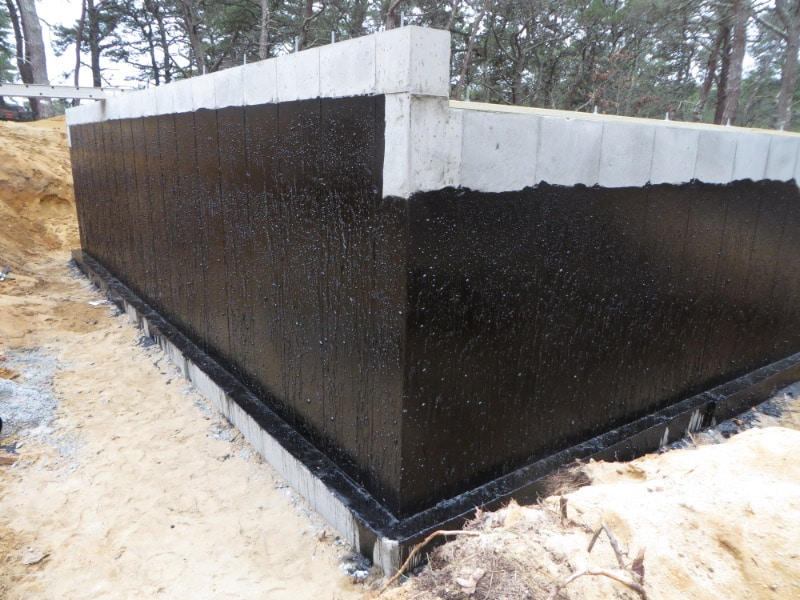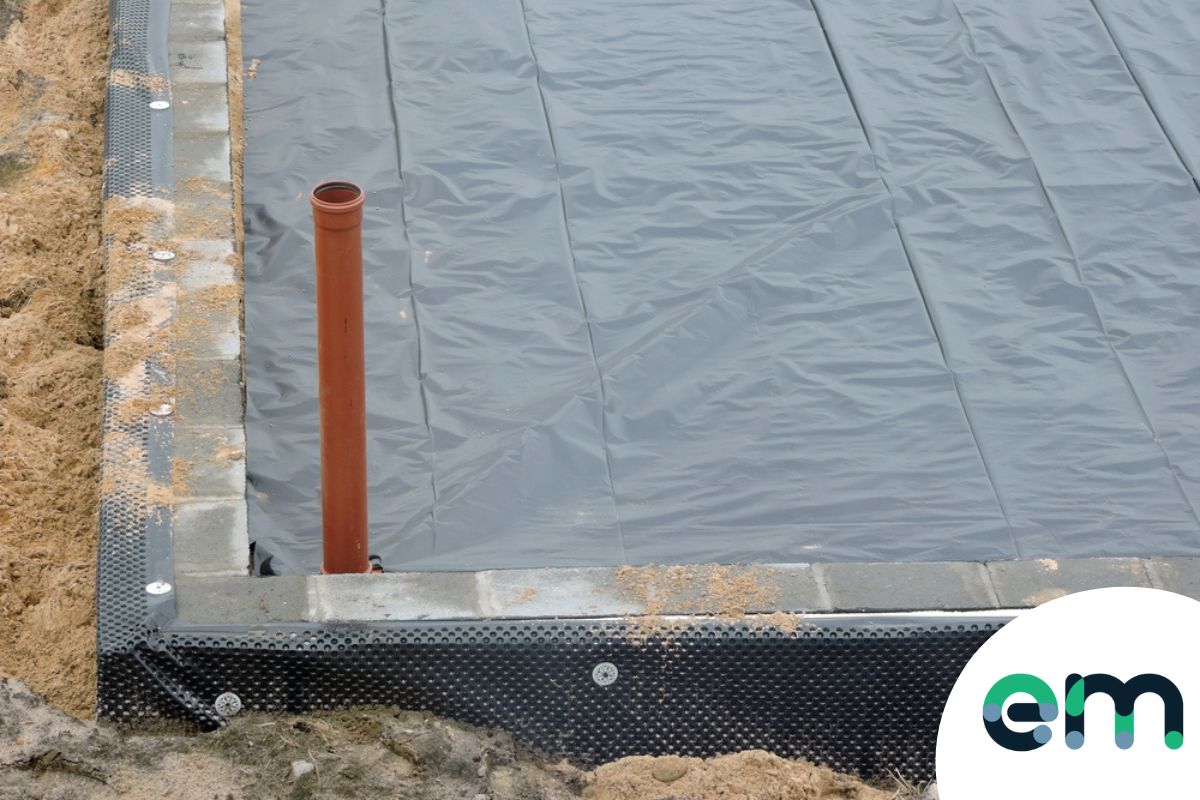Top 5 causes of penetrating damp and how mould removal newcastle can help
Top 5 causes of penetrating damp and how mould removal newcastle can help
Blog Article
Discovering the Numerous Strategies and Solutions for Effective Damp Proofing
Moisture in structures poses considerable challenges to both structural honesty and indoor air high quality. Different techniques and services have arised to battle this pervasive problem. From typical damp-proof membranes to ingenious chemical treatments, each technique offers distinct benefits. Recognizing these alternatives is crucial for reliable wetness control. Selecting the right solution depends on details structure conditions and needs, motivating additional expedition right into the most efficient wet proofing approaches readily available.
Understanding the Causes of Dampness
Dampness can arise from different sources, comprehending these causes is vital for reliable removal. Typically, dampness originates from 3 main sources: climbing moist, passing through moist, and condensation. Rising wet occurs when groundwater takes a trip upwards with porous materials, such as block or stone, commonly because of an absence of an efficient obstacle (damp removal newcastle). Permeating wet is usually triggered by external aspects, including roofing system leakages, faulty rain gutters, or harmed walls, enabling water to infiltrate a home. Condensation, on the various other hand, arises from excess dampness in the air, typically exacerbated by inadequate air flow and temperature differences, leading to water droplets basing on surface areas. Identifying these underlying issues is essential, as each kind of moisture calls for a tailored approach for removal. Proper evaluation aids in determining one of the most reliable solutions, eventually protecting the architectural honesty of a building and improving indoor air top quality
Conventional Damp-Proof Membrane Layers

Chemical Damp-Proofing Solutions
Chemical damp-proofing remedies provide an ingenious technique to avoiding wetness intrusion in structures. These techniques generally include the application of liquid chemicals that permeate stonework and create a barrier versus rising damp. Frequently used chemicals consist of silanes, siloxanes, and various other water-repellent representatives that respond with surface materials to create a hydrophobic layer.The application process generally calls for boring holes into the wall surfaces, infusing the chemical service, and allowing it to cure. This approach is especially helpful for older frameworks where typical damp-proof membrane layers may be impractical. Chemical damp-proofing can be much less disruptive and more cost-effective than substantial restoration projects.While effective, these options depend on proper application and ecological problems for peak performance. damp removal newcastle. Regular maintenance and tracking are important to assure the long life of the damp-proofing treatment. Generally, chemical damp-proofing represents a functional option for guarding buildings versus moisture-related damages
Tooth Cavity Wall Surface Construction Methods
Dental caries wall building and construction techniques use numerous benefits, specifically in moisture control and power performance. By incorporating an air void in between 2 layers of stonework, these walls successfully minimize water ingress while enhancing insulation. This mix not only protects frameworks from moisture but also contributes to reduced power usage.
Benefits of Dental Caries Wall Surfaces
When considering efficient moist proofing methods, the advantages of cavity wall surfaces stand out prominently. Tooth cavity walls contain 2 different layers, producing an air void that properly reduces moisture infiltration. This design minimizes the threat of moisture, as the outer wall surface acts as a barrier versus rainfall and water access. In addition, dental caries wall surfaces boost thermal insulation, which adds to power effectiveness by minimizing warm loss. They likewise supply sound insulation, helping to create a quieter interior setting. In addition, the air void enables ventilation, which assists in moisture control and decreases the chance of mold and mildew development. These advantages not just improve the overall convenience of a structure however also add to its long life and architectural integrity.
Dampness Control Methods
Efficient moisture control methods are essential in dental caries wall building and construction to guarantee lasting defense against moisture. One main method involves the incorporation of weep openings, which facilitate water drain from the tooth cavity, stopping build-up. Furthermore, making use of breathable membrane layers can assist handle dampness degrees while enabling entraped vapor to leave. Correct positioning of insulation is also essential, as it must not block drain paths. Making sure that the outer fallen leaves of the cavity wall surface are built with water-resistant materials improves total sturdiness. Normal maintenance checks are important to identify any type of clogs or damages early, securing the framework's honesty. Inevitably, a combination of these techniques develops a durable protection versus wetness intrusion in tooth cavity walls.
Insulation and Energy Effectiveness
Insulation plays an important duty in boosting power performance within tooth cavity wall construction. By including protecting products, these wall surfaces develop a thermal obstacle that decreases warm loss and decreases energy consumption. Effective insulation not only aids preserve a secure indoor temperature level but likewise alleviates the threat of moisture, as it protects against condensation within the wall cavity. Different techniques, such as the usage of stiff foam boards or mineral woollen, can be employed to attain perfect insulation efficiency. In addition, correct installation is important to guarantee that spaces and gaps are decreased, which can otherwise compromise power performance. Ultimately, a well-insulated cavity wall surface adds substantially to total sustainability and lowers home heating and cooling prices for property owners.
External Damp Proofing Approaches
External damp proofing approaches are necessary for shielding frameworks from moisture infiltration. Two efficient strategies consist of the application of water-proof membrane layers and the installment of French drains. These solutions aid minimize water buildup and protect the stability of buildings.
Waterproof Membrane Layer Application
While numerous methods exist for protecting against moisture ingress, the application of water-proof membrane layers remains a very reliable exterior damp proofing method. These membranes are generally made from materials such as polyethylene, rubber, or changed bitumen, supplying a durable barrier against water infiltration. The setup process entails using the membrane layer to the exterior surfaces of structures or walls, guaranteeing full coverage to avoid leakages. Appropriate adhesion and securing at joints are vital to maximizing effectiveness. Water-proof membrane layers can be used in numerous types, including liquid finishings and sheet membrane layers, permitting for flexibility based upon the certain demands of the structure. This approach not just secures structures from moisture however likewise enhances their long life and architectural honesty.
French Drain Setup
One efficient technique for handling groundwater and protecting against wetness build-up around a structure's foundation is the setup of a French drainpipe. This water drainage system contains a trench full of crushed rock and a perforated pipe that redirects surface water far from the structure. Appropriate setup requires mindful preparation, making certain that the drainpipe slopes far from the framework to help with suitable water flow. Additionally, the area of the drainpipe is important; it needs to be placed in areas vulnerable to merging or excess wetness. Regular upkeep, including clearing up debris from the crushed rock and making certain the pipe stays unblocked, is vital for long-term effectiveness. Inevitably, a well-installed French drain can greatly minimize the danger of water-related problems in basements and structures.
Inside Waterproofing Methods
Interior waterproofing approaches are important for protecting a building's interior from moisture seepage and prospective water damage. These methods generally entail the application of specialized products and strategies created to create check here a wetness obstacle within the framework. One common strategy is making use of water-proof coverings or sealers on wall surfaces and floors, which protect against wetness from penetrating surfaces.Additionally, mounting indoor drainage systems, such as sump pumps, can successfully take care of water build-up in cellars and creep rooms. Another method entails the usage of vapor obstacles, which are mounted to inhibit wetness motion from the ground right into living spaces.Moreover, dealing with any type of fractures or voids in walls or structures with suitable sealants ensures a comprehensive defense against water invasion. By executing these interior waterproofing methods, homeowner can significantly minimize the threat of mold and mildew development, architectural damages, and various other moisture-related concerns. Correct implementation of these methods is necessary for lasting security and structure stability.
Routine Maintenance and Evaluation Practices
Regular maintenance and inspection practices are vital for ensuring the long-lasting performance of moist proofing options in any type of building. Regular checks make it possible for home owners to identify very early signs of wetness intrusion, such as peeling paint, mold and mildew development, and stuffy smells. These signs can signal underlying problems that require instant attention.Inspections should be conducted at the very least every year, focusing on at risk areas like basements, creep spaces, and outside wall surfaces. Throughout these analyses, residential or commercial property owners should take a look at sealants, water drainage systems, and air flow to confirm they function correctly.Additionally, keeping seamless gutters and downspouts is necessary, as stopped up systems can result in water accumulation near the structure. Carrying out a regular upkeep schedule, along with prompt repair work, can considerably expand the life expectancy of damp proofing procedures and safeguard the architectural stability of the structure. Positive measures eventually add to the total health and wellness of the living environment.
Regularly Asked Inquiries
How Much Time Does Damp Proofing Typically Last?
The duration of moist proofing effectiveness varies, normally lasting between 20 to 50 years. Factors such as application high quality, ecological conditions, and upkeep methods significantly influence the longevity of the wet proofing treatment.

Can I Damp Evidence My Home Myself?
The individual contemplated the expediency of do it yourself damp proofing. With proper study and the best products, it is feasible. Nevertheless, they likewise identified the significance of expert guidance to assure durable effectiveness and avoid future issues.
What Are the Indicators of Inefficient Damp Proofing?
Signs of inadequate damp proofing consist of consistent musty odors, visible mold development, peeling paint, damp patches on walls, and wood decay - mould treatment newcastle. House owners ought to deal with these issues promptly to avoid more damages and health worries
Does Damp Proofing Affect Indoor Air Top Quality?

Exactly How Much Does Specialist Damp Proofing Cost?
Expert wet proofing costs differ substantially, usually ranging from $1,000 to $5,000 depending on the building's size, the degree of the wet issue, and selected approaches. Each situation needs a customized assessment for precise prices. Commonly, moisture stems from three primary resources: climbing wet, passing through wet, and condensation. When considering efficient moist proofing techniques, the benefits of dental caries wall surfaces stand out plainly. External moist proofing approaches are vital for securing frameworks from dampness seepage. While numerous approaches exist for protecting against moisture access, the application of waterproof membranes continues to be an extremely effective outside wet proofing technique. Indications of inadequate damp proofing consist of persistent mildewy smells, visible mold development, peeling off paint, damp patches on wall surfaces, and timber decay.
Report this page